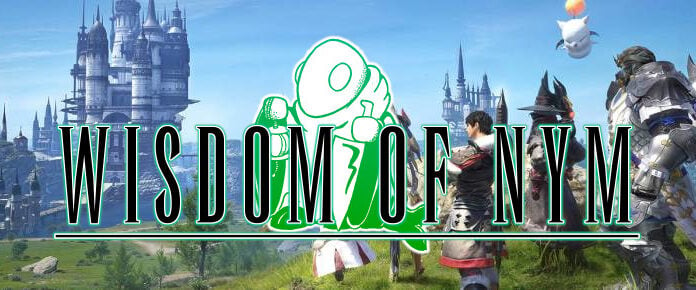
July 27th 2001. On this date, Funcom pulled the trigger on Anarchy Online, launching it in North America with a planned release in Europe a couple of months later.
Anarchy Online lived up to its name as an unreliable product that squandered a lot of initial goodwill by not being ready for release. Funcom begged game review sites to hold off on posting judgments, while sending out a newsletter during that first week with promises of improvements: “There have been some significant issues that our customers have been dealing with the last few days. It has been difficult to log on due to massive traffic, and the game is unfortunately still unstable. We apologize for all the inconvenience this has caused our customers and we are working around the clock to make things right.”
Around the clock wasn’t enough; it took Funcom a half-year to get all of these critical issues hammered out to the point where most anyone who wanted to could log in and play. During this time period, the MMO was slammed with bad reviews and word-of-mouth — but not enough to kill it entirely. Dedicated players stuck it out, and gradually the title started to function as intended.
For the game itself, Anarchy Online sent players to the far-flung future of 29,475 AD, where they became the latest adventurers to arrive at Rubi-Ka. They chose from an array of classes — such as Agent or Bureaucrat — and then set to completing tasks for the major factions of the game: Omni-Tek, the Clan, the Neturals, the Redeemed, and the Unredeemed.
If there wasn’t enough to do, players could always whip up their own generated quests with Anarchy Online’s patented dynamic missions. Basically, this system allowed players to whip up a randomized pocket dungeon to run for experience and other rewards.
There were plenty of other innovative features, such as apartments (customizable player housing) and a soundtrack that would shift and change depending on what was happening to the player at the time. Players also fell in love with Anarchy Online’s unofficial mascot: the leet, a little critter who spoke in “1337 speak.”
Funcom prided itself on putting out a game with graphics that looked far better than the super-chunky EverQuest or Dark Age of Camelot. Anarchy Online’s team felt that its characters had better dimensions and looked like proper people.
Its second year of operation went better, especially as Funcom released a “booster” — a content update — called Notum Wars that introduced territory control PvP to the game’s landscape. Funcom’s poor sales of Anarchy Online during 2001 started climbing up, with a subscriber count of 150,000 being announced during that time.
The entirety of Anarchy Online’s expansions happened thereafter from 2003 through 2006, as Shadowlands, Alien Invasion, and Lost Eden brought to the table more lands (such as Shadowlands‘ seven zones), two new classes (Shadowlands‘ Keeper and Shade), more systems (guild housing, alien XP), and vehicles that players could fly and drive. These were truly the glory years of Anarchy Online, with a peak subscription count rising to 700,000 shortly by late 2004. The last big content release came several years later in 2009 in the form of an endgame booster called Legacy of the Xan.
While we think of titles like Dungeons and Dragons Online and Runes of Magic bringing the free-to-play business model to MMORPGs, the truth is that older games such as RuneScape and Anarchy Online did it first. In 2004, Funcom announced a F2P option that would allow players to experience the game if they were willing to see virtual billboards (advertising real-world products) all over their game landscape. This proved successful, pulling in 400,000 additional players in the first half-year of operation.
By 2008 and the game’s 7th anniversary, Anarchy Online had racked up a total of two million free and subscribed players who had jumped into Rubi-Ka. The MMO was critically acclaimed, too, netting over two dozen awards.
However, by this time, the MMORPG was starting to look a little long in the tooth, especially compared to Funcom’s newest MMO, Age of Conan. Talk began about transitioning Anarchy Online’s older graphics engine over to the studio’s proprietary Dreamworld tech, but it wouldn’t be until seven years later, in 2015, that this visual upgrade would go live to a mostly indifferent gaming public.
By its second decade, Anarchy Online was well into the “long tail” of its operation, with a reduced community of loyalists. Funcom eventually merged all of the servers down to a single shard by 2013, bringing its entire playerbase into the same world.
While Funcom stopped busting out expansion packs, the studio continued to tinker with Anarchy Online over the next decade. Anniversaries were celebrated with wild abandon, a progression server was introduced, and the title came out on Steam in 2017.
And so we reach today, where Anarchy Online is celebrating its 20th anniversary. Sure, the game isn’t breaking headlines or looking at any significant development, but it’s a victory in and of itself to still be operating long, long after everyone in the world thought it was going to crater due to a botched launch. Cheers, Rubi-Ka!
 Believe it or not, MMOs did exist prior to World of Warcraft! Every two weeks, The Game Archaeologist looks back at classic online games and their history to learn a thing or two about where the industry came from… and where it might be heading.
Believe it or not, MMOs did exist prior to World of Warcraft! Every two weeks, The Game Archaeologist looks back at classic online games and their history to learn a thing or two about where the industry came from… and where it might be heading.

















